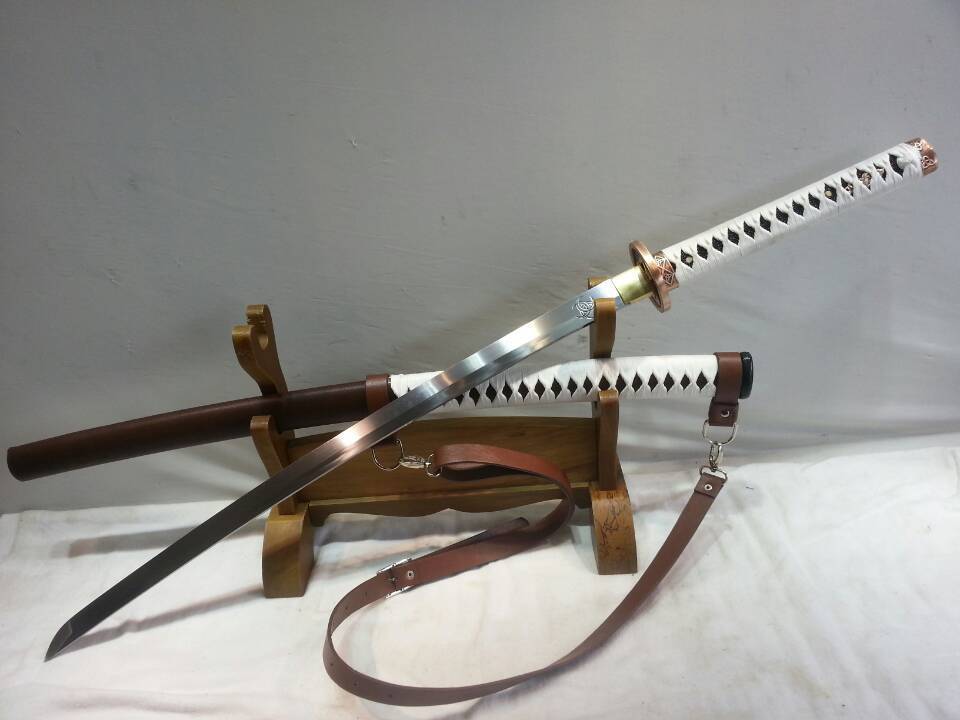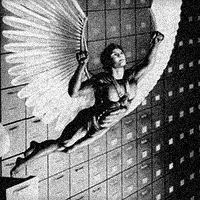![]() انتشار شده در Georgia - تعاملات اجتماعی و سرگرمی - 11 Jun 2016 14:55 - 7
انتشار شده در Georgia - تعاملات اجتماعی و سرگرمی - 11 Jun 2016 14:55 - 7
The first use of "katana" (gatana) as a word to describe a long sword that was different from a "tachi" occurs as early as the Kamakura Period (1185–1333).
The evolution of the tachi into the katana seems to have started during the early Muromachi Period (1337 to 1573).
The Muromachi period, also known as the Muromachi era, the Ashikaga era, or the Ashikaga period) is a division of Japanese History running from approximately 1336 to 1573.
Muromachi Era

Starting around the year 1400, long swords signed with the "katana" signature were made. This was in response to samurai wearing their tachi in what is now called "katana style" (cutting edge up). Japanese swords are traditionally worn with the signature facing away from the wearer.
When a tachi was worn in the style of a katana, with the cutting edge up, the tachi's signature would be facing the wrong way. The fact that swordsmiths started signing swords with a katana signature shows that some samurai of that time period had started wearing their swords in a different manner.
The rise in larity of katana amongst samurai came about due to the changing nature of close-combat warfare. The quicker draw of the sword was well suited to combat where victory depended heavily on fast response times.
The katana further facilitated this by being worn thrust through a belt-like sash (obi) with the sharpened edge facing up. Ideally, samurai could draw the sword and strike the enemy in a single motion.
Previously, the curved tachi had been worn with the edge of the blade facing down and suspended from a belt

The evolution of the tachi into the katana seems to have started during the early Muromachi Period (1337 to 1573).
The Muromachi period, also known as the Muromachi era, the Ashikaga era, or the Ashikaga period) is a division of Japanese History running from approximately 1336 to 1573.

Starting around the year 1400, long swords signed with the "katana" signature were made. This was in response to samurai wearing their tachi in what is now called "katana style" (cutting edge up). Japanese swords are traditionally worn with the signature facing away from the wearer.
When a tachi was worn in the style of a katana, with the cutting edge up, the tachi's signature would be facing the wrong way. The fact that swordsmiths started signing swords with a katana signature shows that some samurai of that time period had started wearing their swords in a different manner.
The rise in larity of katana amongst samurai came about due to the changing nature of close-combat warfare. The quicker draw of the sword was well suited to combat where victory depended heavily on fast response times.
The katana further facilitated this by being worn thrust through a belt-like sash (obi) with the sharpened edge facing up. Ideally, samurai could draw the sword and strike the enemy in a single motion.
Previously, the curved tachi had been worn with the edge of the blade facing down and suspended from a belt

تایید
Ts1loXooKaip3نظر ها (7)









